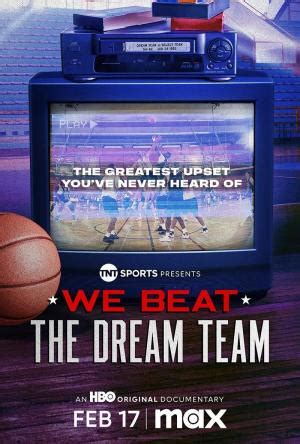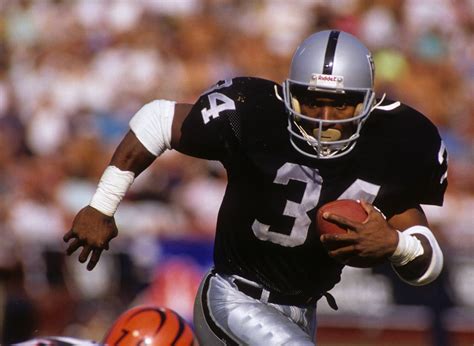
Dr. J believes his hypothetical “Dream Team” featuring himself, Michael Jordan, LeBron James, Magic Johnson, and Larry Bird would be unbeatable against any NBA team, past or present, due to their collective basketball IQ and versatility.
Julius Erving, the basketball legend known as Dr. J, confidently asserted that a theoretical super-team comprised of himself, Michael Jordan, LeBron James, Magic Johnson, and Larry Bird would dominate any NBA squad ever assembled. Erving made this bold claim during a recent appearance on the “Run It Back” podcast on FanDuel TV, sparking debate and excitement among basketball fans worldwide. He emphasized the unparalleled basketball IQ, versatility, and all-around talent of his imagined lineup, suggesting it would be an unstoppable force on the court. “Who could beat that team?” Erving asked rhetorically, highlighting the unique blend of scoring prowess, playmaking ability, and defensive capabilities that the five players would bring to the game.
Erving’s selection criteria focused on a combination of legendary status, individual skill sets, and the potential for seamless teamwork. Each player on his list represents a distinct era of basketball dominance and possesses qualities that, when combined, would create a seemingly insurmountable challenge for any opponent.
Michael Jordan, widely regarded as the greatest basketball player of all time, brings his unparalleled scoring ability, defensive tenacity, and competitive drive to the hypothetical team. Jordan’s six NBA championships, five MVP awards, and numerous scoring titles underscore his dominance in the 1990s and his lasting impact on the game.
LeBron James, a four-time NBA champion, four-time MVP, and the league’s all-time leading scorer, offers exceptional versatility, playmaking, and leadership. James’ ability to excel in all facets of the game makes him a unique asset and a perfect complement to the other legends on the team.
Magic Johnson, a five-time NBA champion and three-time MVP, is renowned for his exceptional court vision, passing skills, and ability to elevate the play of his teammates. Johnson’s charismatic leadership and infectious enthusiasm would be invaluable assets to the team’s chemistry and performance.
Larry Bird, a three-time NBA champion and three-time MVP, is celebrated for his exceptional shooting ability, basketball IQ, and competitive spirit. Bird’s versatility and ability to excel in clutch situations would provide the team with an additional layer of offensive firepower and defensive prowess.
Julius Erving himself, an 11-time All-Star and ABA champion, brings his revolutionary aerial acrobatics, scoring ability, and charismatic presence to the team. Erving’s pioneering style of play helped pave the way for future generations of high-flying athletes and cemented his legacy as one of basketball’s most influential figures.
Erving’s hypothetical super-team immediately ignited discussions about the greatest possible NBA lineups and the potential outcomes of matchups across different eras. Fans and analysts debated the strengths and weaknesses of Erving’s selections, as well as the potential challenges that the team might face against other legendary squads. The discussion also highlighted the subjective nature of such comparisons, as different individuals prioritize different qualities and attributes when evaluating players and teams.
One of the most frequently discussed potential matchups involved a hypothetical game against the 1992 United States Olympic “Dream Team,” which featured many of the same legendary players, including Michael Jordan, Magic Johnson, and Larry Bird. While the 1992 Dream Team is widely regarded as one of the greatest basketball teams ever assembled, Erving’s inclusion of LeBron James and himself in his hypothetical lineup added a new dimension to the debate.
The inclusion of LeBron James in Erving’s lineup sparked considerable discussion, as some analysts argued that James’s unique combination of scoring, playmaking, and versatility would make him an invaluable asset in any era. Others questioned how James’s playing style would mesh with the other legends on the team, particularly Michael Jordan, who is known for his competitive intensity and desire to be the primary scorer.
Erving’s confidence in his hypothetical team stems from his belief that the collective basketball IQ and versatility of the five players would be unmatched by any other team. He argued that their ability to adapt to different game situations, make intelligent decisions, and execute complex plays would give them a decisive advantage over their opponents.
In addition to their individual skills and basketball IQ, Erving also emphasized the importance of teamwork and chemistry in his hypothetical team. He suggested that the five players would be able to seamlessly integrate their talents and play together effectively, despite their different playing styles and personalities. This emphasis on teamwork and chemistry reflects Erving’s own experience as a player, where he often prioritized the success of the team over individual accolades.
The debate over Erving’s hypothetical team also highlighted the challenges of comparing players and teams across different eras. The game of basketball has evolved significantly over the years, with changes in rules, strategies, and athletic standards. As a result, it can be difficult to accurately assess how players from different eras would perform against each other.
Despite these challenges, the debate over Erving’s hypothetical team has provided a valuable opportunity to reflect on the history of basketball and appreciate the contributions of some of the game’s greatest players. It has also sparked renewed interest in the careers of Erving, Jordan, James, Johnson, and Bird, and has encouraged fans to revisit their legendary performances.
Ultimately, the question of whether Erving’s hypothetical team would be unbeatable remains a matter of speculation. However, the fact that the debate continues to generate so much interest and passion is a testament to the enduring legacy of these five legendary players and their impact on the game of basketball. Erving’s claim serves as a reminder of the rich history of the NBA and the endless possibilities that exist when imagining dream teams and hypothetical matchups. The discussion is not just about who would win, but also about appreciating the unique qualities and contributions of each player and celebrating the game of basketball in all its glory.
The discussion also touched upon the evolving nature of basketball and how different eras have emphasized different skill sets and playing styles. For example, the emphasis on three-point shooting in today’s NBA was compared to the focus on post play and mid-range shots in previous eras. This comparison highlighted the importance of adaptability and the ability to adjust to different game situations.
Furthermore, the debate over Erving’s hypothetical team also raised questions about the relative importance of individual talent versus team chemistry. While individual talent is undoubtedly important, the ability to work together as a cohesive unit is often cited as a key factor in championship-winning teams. The discussion emphasized the importance of finding the right balance between individual skills and team dynamics.
In conclusion, Julius Erving’s bold claim that his hypothetical “Dream Team” would be unbeatable has sparked a lively and engaging debate among basketball fans and analysts. While the question of whether the team would actually win remains a matter of speculation, the discussion has provided a valuable opportunity to reflect on the history of basketball, appreciate the contributions of some of the game’s greatest players, and celebrate the enduring legacy of the NBA. The debate also highlights the challenges of comparing players and teams across different eras and the importance of considering factors such as individual skills, team chemistry, and adaptability. Ultimately, Erving’s claim serves as a reminder of the passion and excitement that the game of basketball continues to generate.
Here are five frequently asked questions (FAQ) related to the news:
FAQ 1: Who are the players in Dr. J’s hypothetical “Dream Team,” and why were they chosen?
Dr. J’s “Dream Team” consists of himself, Michael Jordan, LeBron James, Magic Johnson, and Larry Bird. These players were chosen for their exceptional basketball IQ, versatility, scoring ability, playmaking skills, and overall dominance in their respective eras. Each player represents a unique blend of talent and leadership that Dr. J believes would make the team unbeatable.
FAQ 2: What makes this “Dream Team” potentially unbeatable, according to Dr. J?
According to Dr. J, the team’s unbeatable nature stems from their collective basketball IQ, versatility, and ability to excel in all facets of the game. He believes that their combined scoring prowess, playmaking ability, defensive capabilities, and adaptability would give them a decisive advantage over any opponent. The team’s chemistry and ability to work together seamlessly would also contribute to their dominance.
FAQ 3: How does Dr. J’s “Dream Team” compare to the 1992 United States Olympic “Dream Team”?
Dr. J’s “Dream Team” shares some similarities with the 1992 United States Olympic “Dream Team,” as both teams feature legendary players such as Michael Jordan, Magic Johnson, and Larry Bird. However, Dr. J’s team includes himself and LeBron James, which adds a new dimension to the debate. Some analysts argue that James’s unique combination of scoring, playmaking, and versatility would make the team even more formidable than the 1992 Dream Team.
FAQ 4: What are some potential challenges that Dr. J’s “Dream Team” might face?
Despite their immense talent, Dr. J’s “Dream Team” might face challenges related to player chemistry and the potential for conflicting egos. Integrating the playing styles of dominant players like Michael Jordan and LeBron James could require careful management. Additionally, the team would need to adapt to the specific rules and strategies of different eras in order to compete effectively against past NBA squads.
FAQ 5: How does this debate highlight the challenges of comparing players and teams across different eras?
The debate over Dr. J’s “Dream Team” underscores the challenges of comparing players and teams from different eras due to the evolving nature of basketball. Changes in rules, strategies, and athletic standards make it difficult to accurately assess how players from different eras would perform against each other. The discussion also raises questions about the relative importance of individual talent versus team chemistry and the need to consider factors such as adaptability and the specific context of each era.
Expanded Article: Detailed Analysis of Dr. J’s Dream Team Claim
Julius Erving’s bold assertion that his hypothetical “Dream Team,” featuring himself, Michael Jordan, LeBron James, Magic Johnson, and Larry Bird, would be unbeatable against any NBA squad has ignited a fervent debate among basketball enthusiasts. While such hypothetical matchups are inherently speculative, the discussion provides a valuable lens through which to examine the legacies of these legendary players and the evolution of the sport. This expanded analysis delves deeper into the rationale behind Erving’s selections, potential challenges the team might face, and the broader implications of comparing players across different eras.
The Rationale Behind the Selections:
Dr. J’s selection of Michael Jordan, LeBron James, Magic Johnson, and Larry Bird alongside himself wasn’t arbitrary. Each player brings a unique set of skills and attributes that, when combined, create a potentially unstoppable force.
-
Michael Jordan: Widely considered the greatest basketball player of all time, Jordan’s inclusion is a no-brainer. His scoring prowess is unmatched, with a career average of 30.1 points per game. Beyond the scoring, Jordan was a defensive stalwart, earning nine All-Defensive First Team selections and a Defensive Player of the Year award. His competitive drive and ability to perform under pressure are legendary. “He’s the best, period,” Erving might argue, emphasizing Jordan’s relentless pursuit of perfection.
-
LeBron James: A four-time NBA champion and the league’s all-time leading scorer, James offers unparalleled versatility. He can score, rebound, pass, and defend at an elite level. His court vision and playmaking ability are exceptional, making him a natural facilitator. His ability to adapt his game to different situations and lead teams to victory makes him an invaluable asset. James’s presence would provide a crucial element of adaptability to the team.
-
Magic Johnson: Johnson’s inclusion brings exceptional court vision, passing skills, and leadership to the team. A five-time NBA champion and three-time MVP, Johnson revolutionized the point guard position with his size, athleticism, and flair. His ability to elevate the play of his teammates is undeniable. Johnson’s infectious enthusiasm and ability to connect with players would be crucial for team chemistry.
-
Larry Bird: Bird, a three-time NBA champion and three-time MVP, is renowned for his exceptional shooting ability, basketball IQ, and competitive spirit. His versatility allowed him to play multiple positions effectively, and his clutch performances are legendary. Bird’s trash-talking and mental toughness would add an extra layer of intimidation to the team.
-
Julius Erving: Dr. J himself brings a revolutionary style of play to the team. His aerial acrobatics and scoring ability captivated audiences and paved the way for future generations of high-flying athletes. Erving’s ABA experience adds a unique dimension to the team’s skillset, bringing a different perspective and a willingness to innovate.
Potential Challenges and Counterarguments:
Despite the immense talent on this hypothetical team, potential challenges and counterarguments exist:
-
Ego Management: Assembling a team of superstars inevitably raises questions about ego management. Michael Jordan, LeBron James, and Magic Johnson are all used to being the primary focal point of their respective teams. Successfully integrating their playing styles and ensuring that everyone is willing to sacrifice for the greater good would be crucial.
-
Ball Dominance: With multiple elite playmakers, questions arise about ball distribution and offensive flow. Ensuring that everyone gets their share of touches and that the offense doesn’t become stagnant would be a challenge. A clearly defined offensive system would be necessary to maximize the team’s potential.
-
Defensive Matchups: While the team boasts exceptional defensive talent, potential matchup issues could arise. For example, guarding quicker point guards or larger, more physical centers could pose challenges. Strategically utilizing the team’s versatility and employing effective defensive schemes would be essential.
-
Competition from Other Eras: While Erving is confident in his team’s ability to defeat any opponent, other legendary squads could pose a serious threat. The 1996 Chicago Bulls, the 2017 Golden State Warriors, or even the 1980s Boston Celtics could present formidable challenges. Hypothetical matchups against these teams would be fascinating to imagine.
Comparing Players Across Eras:
The debate surrounding Dr. J’s “Dream Team” highlights the inherent challenges of comparing players across different eras. The game of basketball has evolved significantly over time, with changes in rules, strategies, and athletic standards.
-
Rule Changes: The rules of the game have undergone numerous changes over the years, impacting scoring, defensive strategies, and overall pace of play. For example, the introduction of the three-point line in 1979 revolutionized offensive spacing and shot selection. Comparing players who played under different rules requires careful consideration.
-
Strategic Evolution: Basketball strategies have also evolved significantly. The emphasis on three-point shooting, analytics-driven decision-making, and positionless basketball in today’s NBA contrasts sharply with the focus on post play and isolation offense in previous eras.
-
Athletic Standards: Athleticism has also improved dramatically over time. Modern NBA players are generally bigger, stronger, and faster than their predecessors. However, it’s important to consider the context of each era and acknowledge the limitations of comparing athletes across generations.
The Enduring Legacy of the Legends:
Despite the challenges of comparing players across eras, the debate surrounding Dr. J’s “Dream Team” serves as a reminder of the enduring legacy of these legendary players. Michael Jordan, LeBron James, Magic Johnson, Larry Bird, and Julius Erving have all left an indelible mark on the game of basketball and continue to inspire generations of players and fans.
Their accomplishments, skills, and competitive spirit have cemented their places in basketball history. Whether or not Dr. J’s “Dream Team” would actually be unbeatable is ultimately a matter of speculation, but the discussion provides a valuable opportunity to celebrate the greatness of these five iconic players.
The Value of Hypothetical Debates:
While hypothetical debates like this may seem frivolous, they serve an important purpose. They allow fans to engage with the history of the game, appreciate the contributions of different eras, and imagine possibilities that might never come to fruition. These debates foster a sense of community and passion among basketball enthusiasts and keep the memories of legendary players alive.
Conclusion:
Julius Erving’s bold claim about his “Dream Team” has sparked a lively and engaging discussion about the greatest players of all time and the potential outcomes of hypothetical matchups. While the question of whether the team would actually be unbeatable remains a matter of opinion, the debate highlights the enduring legacy of these five iconic players and the passion that the game of basketball continues to inspire. The discussion also underscores the challenges of comparing players across different eras and the importance of considering factors such as rule changes, strategic evolution, and athletic standards. Ultimately, Erving’s claim serves as a reminder of the rich history of the NBA and the endless possibilities that exist when imagining dream teams and hypothetical matchups. The value of such discussions lies not in finding definitive answers but in celebrating the greatness of the game and the players who have shaped its history. The debate is a testament to the timeless appeal of basketball and the enduring fascination with “what if” scenarios. Erving’s confidence, whether entirely serious or playfully provocative, has enriched the ongoing narrative of basketball’s pantheon of greats and continues to fuel the imaginations of fans worldwide. The ongoing conversations about hypothetical dream teams serve as a reminder that the legacy of these players extends beyond their on-court achievements and into the realm of imagination and enduring debate. The discussion reinforces the idea that the sport is not just about statistics and championships, but also about the stories, the personalities, and the endless possibilities that define the game’s enduring appeal. Erving’s contribution to this ongoing dialogue solidifies his place not only as a legendary player but also as a passionate advocate for the game’s history and its enduring power to captivate and inspire. The analysis of Dr. J’s Dream Team invites fans to delve deeper into the historical context of each player, analyzing their individual contributions and debating how they might synergize in a hypothetical setting. This engagement with basketball history is crucial for appreciating the evolution of the sport and understanding the significance of each era’s contributions. The discussion also underscores the importance of considering factors beyond individual statistics when evaluating players, such as leadership qualities, adaptability, and impact on team dynamics. Erving’s Dream Team serves as a catalyst for a more nuanced understanding of basketball history and the multifaceted qualities that define greatness in the sport. Furthermore, the debate extends beyond the individual players and encourages a broader discussion about the strategic and tactical nuances of basketball across different eras. Analyzing how Dr. J’s Dream Team might fare against teams from different decades prompts fans to consider the evolving rules, strategies, and playing styles that have shaped the game. This comparative analysis fosters a deeper appreciation for the adaptability and innovation that have characterized basketball’s evolution. The discussion also highlights the subjective nature of evaluating greatness in sports and the impossibility of definitively resolving hypothetical matchups. Ultimately, the value of these debates lies in the engagement they foster, the historical context they provide, and the enduring passion they inspire among basketball fans. Erving’s Dream Team serves as a potent reminder that the legacy of basketball extends beyond the court, encompassing the realms of imagination, debate, and enduring admiration for the game’s iconic figures.









